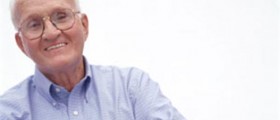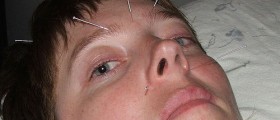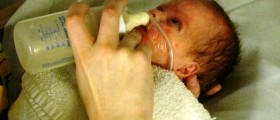
Cerebral Palsy - Overview
Cerebral palsy represents a group of non-progressive motor conditions which commonly lead to physical disability. The term cerebral refers to the cerebrum, the brain, and in people suffering from cerebral palsy different brain areas are affected. The term palsy refers to disorder of movement. In cerebral palsy the damage to the motor control centers of the brain may occur during pregnancy, during childbirth and after the birth until the child turns 3. There are characteristic limits in movement and posture which additionally cause limitation of activity. There are also disturbances of sensation, depth perception and other perceptual problems. The children may have difficulties communicating and in some cases there are even problems with cognition. These children may even suffer from epilepsy. Unfortunately, there is no cure for cerebral palsy. The goal of the treatment is, therefore, to prevent possible complications arising from the very disease.
Diagnosing Cerebral Palsy
There are many symptoms and signs of cerebral palsy and they are quite obvious. Basically symptoms and signs of the disease are essential in setting of the diagnosis. However, doctors always perform physical and neurological examination and several more tests in order to confirm the disease.
During the first few months a child may develop some of the following symptoms and signs of cerebral palsy: lethargy, irritability, fussiness, abnormal and high-pitched cry, trembling of the extremities, poor feeding abilities, low muscle tone and abnormal posture, seizures, eye flattering, body twitching and abnormal reflexes. As the child grows additional symptoms and signs related to infant's muscle tone and posture may develop within the first six months. The child's muscle tone is increased or decreased (the baby is either very stiff or floppy). Furthermore, the infant may hold his/her hand in tight fist. The movement may be asymmetric and there is a poor feeding habit. As the time goes by the diagnosis becomes more obvious. Namely, after the age of six months the baby does not pick up movement skills adequately. The motor development is impeded. The child suffering from cerebral palsy simply cannot adopt and learn all the activities a baby of certain age is supposed to develop.
A well experienced pediatrician can immediately assume a child is suffering from cerebral palsy. Still there are several more examinations he/ she must perform prior confirming the condition. The diagnosis is not set immediately. Namely, the extent of infant's problems is not so clear for some time and the symptoms need to be monitored. The monitoring is performed by an interdisciplinary team (a group of specialists). The data regarding child's accomplishments and comparison of the progression of symptoms is assessed over the months and years.
Prior setting of the definitive diagnosis all the data are taken into consideration and the doctors also perform complete physical and neurological examination of the child, evaluate medical history of both, the child and the mother, and child's development, investigate muscle tone and unusual posture. In some cases it is important to rule out other medical conditions. And finally the great assistance is obtained from CT scan and MRI imaging tests.

















Your thoughts on this
Loading...